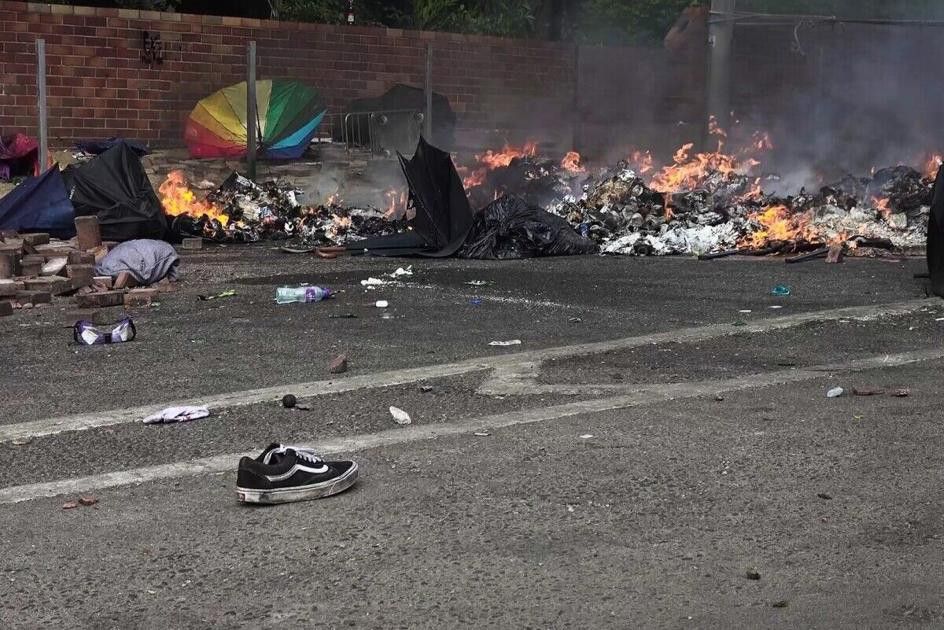Inside the Red Brick Wall (Hong Kong Documentary Filmmakers, 2020)

Inside the Red Brick Wall is a hour-by-hour accounting of what happened when the Hong Kong police department trapped several hundred pro-democracy protesters inside the campus of Hong Kong Polytechnic University in November of 2019. It joins Chan Tze-woon’s Yellowing and Evans Chan’s We Have Boots as essential documents of the recent Hong Kong protest movements. Unlike those two films, it offers almost nothing in the way of ideology and very little hope for the future. Yet it is the most viscerally powerful of the bunch, the first half comprised of haphazardly captured beauty and powerful images of resistance to authority, the second agonizingly despairing in its chronicle of the desperation and fear and betrayals of the activists trapped inside the campus.
Both Yellowing, about the 2014 Umbrella Movement, and We Have Boots, about the transformation of the ideals of the Umbrella protestors into the more complex and chaotic 2019 protests, are informed by the testimony of powerful and persuasive figures, students in the former and activist politicians in the latter. Brick Wall offers none of that. Its directors, collectively and anonymously (for obvious reasons) billed as “Hong Kong Documentary Filmmakers” show little in the way of speechmaking, instead capturing the chaos and confusion of what it must have been like on the ground as the cops point searchlights at you, send sarcastic coded messages with pop songs, then charge in with tear gas, rubber bullets, and batons. The images are remarkable: heroic protesters silhouetted against the blood orange sunset; trash-strewn streets littered with discarded clothes (switching outfits to evade identification, I assume); umbrellas unfurling in unison in acts of solidarity and collective defense. But the faults in the movement’s leaderless structure become tragically apparent in the second half, when the cops have surrounded the campus and begin arresting anyone who tries to leave (including press and medical personnel), having declared that anyone inside the campus is now by definition a rioter.
The second half of the film charts the protesters’ many attempts to escape, most of them total failures, and many attempts to come to a consensus about how to escape, when to escape, or whether to escape, also total failures. Their confusion and frustration gets worse and worse, as these tired, hungry, and scared kids are trapped in a hopeless situation. In one agonizing sequence, thousands of protesters from the outside have gathered to try to breakthrough the police line and rescue the students, but the people inside can’t get organized enough to break out at the same time as the outside is pushing in, to open up a second front on the cops, and so they remain trapped as the outsiders are pushed further and further away by the cops.
In the end, a group of secondary school principals arrive to “rescue” underage protesters, making a deal with the cops to let anyone under 18 out with the promise that they won’t be arrested, for the moment. Every kid brought out has to give their name and ID number, get photographed, and has no guarantee they won’t be prosecuted in the future. But the protestors are so exhausted that many of them take the deal anyway. It’s the slow fizzling away of the revolutionary spirit, led astray by self-righteous adults and internal incoherence.
